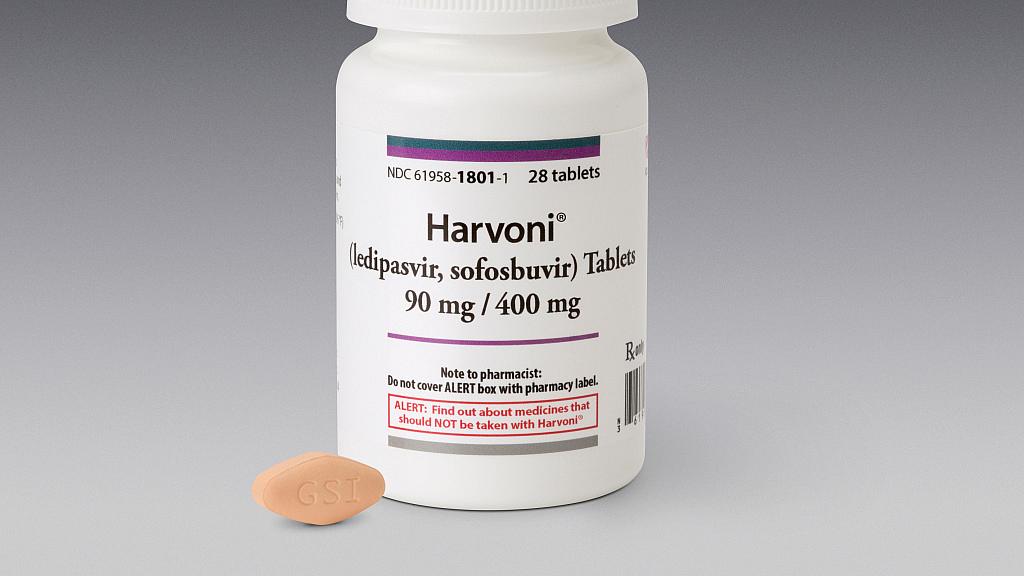LA County changes policy, will provide hepatitis C treatment to IV drug users
Rebecca Plevin wrote this story while participating in the California Data Fellowship, a program of the Center for Health Journalism at USC's Annenberg School of Journalism.
Other stories in the series include:
New Medi-Cal rules ease access to hepatitis C drugs
A financial case for expanding access to costly hep C drugs
Los Angeles County treating few people for hepatitis C
Obesity among Latinos in the San Joaquín Valley: One Family's Response

Gilead Sciences
The policy change comes after KPCC reported in August that L.A. County's guidelines regarding IV drug users were more restrictive than those of the state's Medi-Cal program.
Most people become infected with hepatitis C by sharing needles or other IV drug equipment. Acknowledging this, Medi-Cal expanded its treatment guidelines last year to include active IV drug among those considered eligible for hepatitis C drugs. Medi-Cal covers the cost of drugs for this population.
This summer, Dr. Hal Yee, the Department of Health Services' chief medical officer, defended the county's decision to not provide hepatitis C treatment to IV drug users.
"We believe it is likely that patients who are not using drugs are more likely to complete the treatment than people who are actively using illicit drugs," Yee said at the time. He said very few IV drug users had requested hepatitis C treatment.
In an interview with KPCC, Yee said Health Services' hepatitis C work group, which is comprised of doctors who provide liver care at three county hospitals, decided on Oct. 17 to drop the requirement that IV drug users who are otherwise qualified to receive treatment be drug-free for six months. The change should take effect within the next two weeks, he said.
Yee said he was not at the meeting, but he supports the work group's decision.
But, he added, "I still have concerns that somebody who's actively using will have more challenges to completing therapy than others." He added that it will be Health Services' job to get and keep as many people in treatment as possible.
Yee said he doesn't know how many more people will gain access to hepatitis C treatment under the new policy.
"Call me back in a year or six months and let's see," he said. "We don't have to speculate – we're going to find out."
Hepatitis C can lead to liver infection, chronic liver disease, cirrhosis and liver cancer.
L.A. County's policy change is "a necessary first step" toward eliminating hepatitis C, said Ricky Bluthenthal, a professor in the department of preventive medicine at USC's Keck School of Medicine. He met with Yee a couple of times this summer to encourage him to provide treatment to IV drug users.
"Having a policy that doesn't allow you to deal with the population that has the highest prevalence of the disease, and is potentially the reservoir for it in our local community, doesn't really make sense," Bluthenthal said.
"I'm glad to hear that the department is going to align its policy more closely with a lot of the professional guidelines and the state Medicaid policy ... and really to take a public health approach to treating hepatitis C," said Emalie Huriaux, director of hepatitis policy for Project Inform, which advocates on behalf of people with hepatitis C.
The first of the new class of hepatitis C medications were introduced in late 2013. The drugs were shockingly expensive, but also extremely effective: One course of treatment could effectively cure the illness and prevent the most serious complications, including cirrhosis and liver cancer.
KPCC reported in August that as of the beginning of that month, the county Department of Health Services - which serves about 500,000 people - had approved hepatitis C treatment for a total of 160 people; 81 had completed or begun treatment. The county has been dispensing the new hepatitis C drugs for about a year and a half.
By comparison, the San Francisco Health Network, which serves about 65,000 people overall, had treated 631 people for hepatitis C as of late June. It began treating patients for hepatitis C about two years ago.
[This story was originally published by KPCC.]
